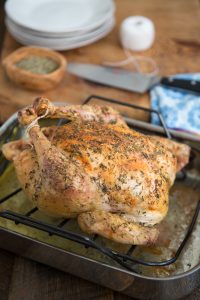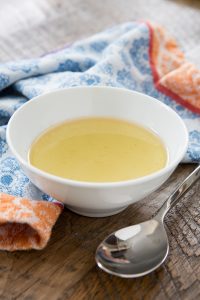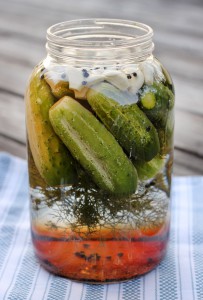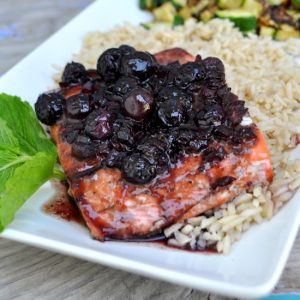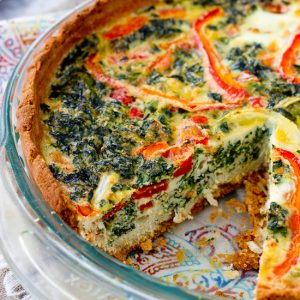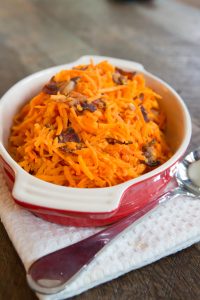At Primal Palate, our mission is to provide you with healthy, nutrient-dense recipes; regardless of any food sensitivities, allergies, or specialty diets. We believe food is meant to be enjoyed; and no one should ever feel as though their world is limited because of food. Whether you are allergic to nuts, eggs, or shellfish; combating an autoimmune disease, avoiding FODMAPs, or eliminating sugar altogether, we want this to be a place where you can find recipes you and your family can enjoy.
To help you find recipes tailored to your needs, we have 12 specialty diet filters available on our site! These include:

We know many of these diets may seem daunting initially, and you may feel lost on what you can or cannot eat. That’s why we’ve categorized each and every recipe for you. No longer are you left wondering, “Does this recipe contain nuts?” “Is that recipe AIP friendly?” “I can’t have nightshades, will this recipe work for me?” It’s time to get excited about cooking healthy again.
In this post, we’ll show you:
- How to use the specialty diet filters on PrimalPalate.com
- How to save recipes for later use
- The meaning of each filter and why some individuals may choose to follow it
How do I use the specialty diet filters?
When visiting the ‘Recipes’ page, on the left-side menu bar you will find all of our specialty diet filters. Once a dietary filter box is checked, only recipes adhering to the diet(s) selected will be shown. It’s that simple!
You are able to use multiple filters at once to accommodate your nutritional needs. You can also filter recipes by meal, or recipe type.
So whether you’re looking for a special treat for your daughter’s birthday, but she can’t have nuts or eggs…
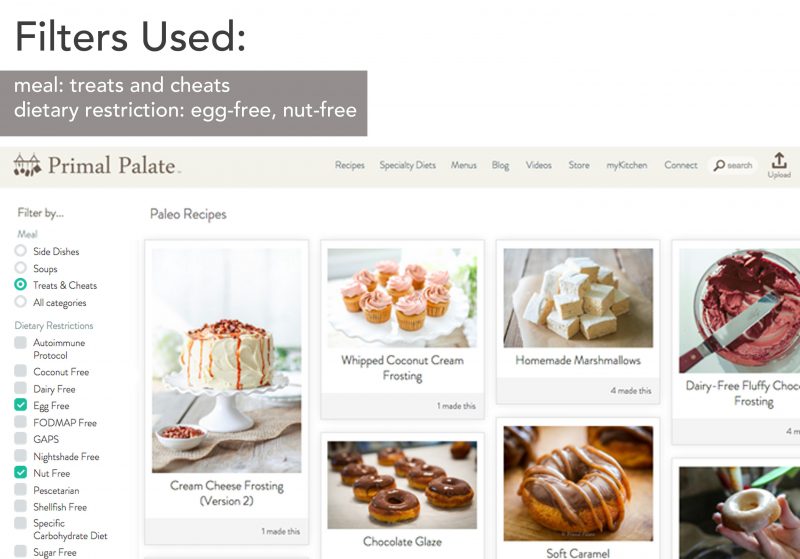
Or you’re looking for a few egg-free breakfast ideas…
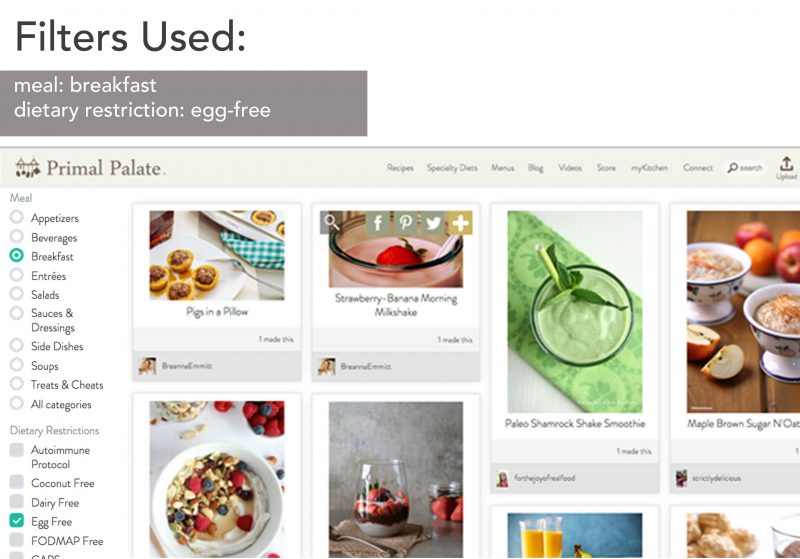
Or you’re eliminating FODMAP’s from your diet…

We’re sure you’ll find recipes to suit your needs, and the needs of your family.
I’ve found a recipe I really like, and I don’t want to lose it! What do I do?
When you find a recipe you like, click the gold “+” sign to add it to your weekly meal plan. Your meal plan can be found anytime under the tab, myKitchen. [Note: You need to be a registered user to use myKitchen, so that recipes can be saved to your account.]
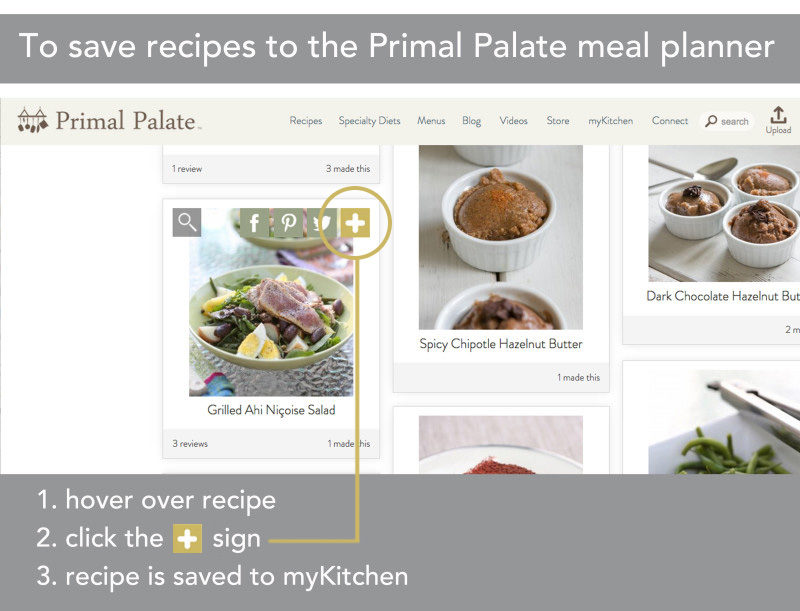
To learn more about using myKitchen, please see this post.
There are 1,500 recipes available on Primal Palate (and counting), so we’re sure you’ll find something to fit your needs. To make your meal plan available on your mobile device, download the Primal Palate app, myKitchen, to your smartphone or tablet.
What does each dietary filter mean?
In this section, we will take a closer look at each dietary filter, including:
- What foods are removed, and
- Why some individuals may want or need to eliminate these foods to obtain optimal health.
Since there are 12 dietary filters available, we have broken this section into three separate posts. In Part I, we will discuss:
- The Autoimmune Protocol
- Coconut Free
- Dairy Free
- Egg Free
>>Be on the lookout for Parts II and III on the blog soon!<<
Autoimmune Protocol (AIP)
Autoimmune diseases are conditions where the body cannot differentiate its own healthy proteins, from the proteins of foreign invaders. The body then attacks its own tissue, causing a hypersensitivity reaction known as an “autoimmune response.” This self-tissue attack can go on for months or years before an autoimmune disease fully develops, causing damage to cells, tissues, and/or organs. According to the American Autoimmune Related Diseases Association, autoimmune diseases affect up to 50 million Americans, and there are over 80 different types. The type of proteins or cells being attacked is what distinguishes one AI disorder from another.
The Autoimmune Protocol (AIP) focuses on reducing inflammation in the gut that causes an autoimmune response. Autoimmune disease cannot be cured, but the AIP diet works to calm and decrease inflammation, thereby lessening the disease’s symptoms and ideally putting it into remission.
The Autoimmune Protocol is an elimination diet designed to combat inflammation and reduce flare-ups. The AIP diet removes:
- Dairy
- Eggs
- Legumes
- Sugar and high-glycemic foods
- Nuts and nut oils
- Seeds and seed oils
- Spices derived from seeds
- Nightshades
- Alcohol
- Coffee
- Chocolate
Diet and lifestyle can play a large role in keeping AI diseases under control. By eliminating inflammatory foods, you can create an environment to heal your body from within. Use the dietary filter on our Recipes page to search through our entire collection of AIP-friendly, gut-healing recipes, or view a few of our favorites below:
For more information, tips, and advice on the AutoImmune Protocol, check out our interview with Bre’anna of He Won’t Know It’s Paleo, who is treating Celiac Disease and Hashimoto’s with AIP.
Coconut-Free
A coconut free diet avoids all coconut or coconut-derived products. Coconut allergy symptoms are similar to those of a tree nut and other food allergy symptoms. The allergy is caused when the immune system mistakes the proteins found in the coconut product as unsafe. The immune system then creates antibodies and activates other chemicals to fight off the coconut proteins.
While a coconut allergy is relatively rare, contact allergic dermatitis from coconut-derived products is more common. This causes an itchy rash to develop one-two days after coming into contact with coconut, and may take several days to heal. Coconut fatty acids diethanolamide (more commonly known as cocamide DEA), is a surface-active derivative of coconut oil used in many household products, including:
- Dish washing liquid
- Shampoos
- Moisturizers
- Soaps
- Hand cleansers
- Laundry detergents
- Cosmetics
If you suspect you have contact dermatitis due to coconut products, visit your doctor and request a patch test for proper diagnosis. If diagnosed, be sure to check the ingredient list on labels when buying any products for yourself or your home.
While coconut is a common ingredient in Paleo baking, we have a large collection of coconut-free treats. View our entire coconut-free recipe collection here.
Dairy-Free
Our Dairy-free recipe filter benefits people with both lactose intolerance and a Casein allergy. An allergic reaction occurs in individuals whose body mistakes the casein protein for a harmful protein, and triggers a histamine response which can include swelling (of the mouth and throat), skin irritation, and congestion (to name a few).
According to the National Institute of Diabetes and Digestive and Kidney Diseases (NIDDK), nearly 1 in 6 Americans are lactose intolerant. That’s a large number! Lactose is the primary carbohydrate found in cow’s milk and dairy products; it also happens to be the most common food intolerance. When people cannot digest the sugar lactose, they are lactose intolerant. Lactose is broken down in the small intestine by an enzyme known as lactase, and turned into glucose and galactose. Many individuals are lactase deficient; meaning, they do not have enough of the enzyme to properly digest the lactose they consume. When the indigestible lactose passes through the GI tract, it causes GI distress along the way. Symptoms may vary and range in severity, but some of the most common symptoms include abdominal pain and cramps, intestinal bloating, gas, diarrhea, and nausea.
In a dairy-free diet, individuals avoid foods with lactose and casein:
- Milk
- Butter and butter fat
- Yogurt
- Cheese
- Cream
- Ice cream
- Custard
- Pudding
- Sheep and goat’s milk, since it contains similar proteins that may cause a reaction
For some individuals, hard cheeses and plain yogurt with live, active cultures may be well-tolerated due to their low quantity of lactose. If you are 100% dairy-free, you do not have to worry about not getting adequate calcium. Green, leafy vegetables such as kale, spinach and bok choy are excellent sources of calcium, and often contain higher amounts of calcium than most dairy products!
In any case, using the dairy-free Primal Palate dietary filter before preparing your meals will prevent any unwanted GI symptoms due to lactose! Here are a few recipes you’d never know are dairy-free:
Egg Free
Although eggs are a staple in many Paleo breakfasts, those who have an egg-allergy or are following the AutoImmune Protocol should avoid them. Most people who are allergic to eggs are allergic to the proteins found in egg whites (ovalbumin, conalbumin, and ovomucoid), not the yolks. [Although it’s better to be safe than sorry, and those diagnosed with an egg allergy should avoid them altogether]. Cooking is believed to inactivate many of the egg proteins, so cooked eggs may be tolerated in cases where raw eggs are not.
With an egg allergy, symptoms may appear only a short period of time after eating or even touching eggs. Egg allergies can cause skin reactions such as swelling, rash, hives, or eczema. Other symptoms may include wheezing or difficulty breathing, runny nose and sneezing, red, watery eyes, stomach pain, nausea, vomiting, or diarrhea, and most severely, anaphylaxis.
Following an egg-free diet does not have to be such an intimidating task with the help of the egg-free dietary filter. Try these egg-free breakfast options instead!
Sugar Free
A sugar free diet eliminates foods that contain sugar. Yes, this even means Paleo-approved sugars! All natural sugars are completely eliminated when this dietary filter is selected. Meaning no honey, maple syrup, stevia, molasses; you name it. You will not even find fruit or fruit juice in the recipes categorized as, “sugar-free.”
The sugar-free dietary filter can be especially helpful if you are doing a 21 Day Sugar Detox. We have provided a full 21DSD Menu Plan for your reference, so be sure to check it out. If you’d like to swap out a recipe on any given day, you may do so by looking through our entire collection of sugar-free recipes. Or, check out a few of our favorite sugar-free recipes below. Remember – just because a recipe isn’t sweetened, doesn’t mean it can’t be bursting with flavor!
Pescetarian
On occasion, we have received the question, “Is it possible to follow a vegetarian version of Paleo?” It would be extremely difficult to consume an adequate supply of protein, and we have therefore included a pescetarian dietary filter on our site. A pescetarian is one who maintains a vegetarian diet, with the addition of fish and other sea foods. In other words, pescetarians eat fish and shellfish, but still abstain from eating other meat sources.
Many Paleo eaters are known to love their pasture-roaming protein sources, but vegetables and wild-caught fish are also a vital element of the diet. Rest assured, you will certainly find many delicious pescetarian recipes with this filter.
Specific Carbohydrate Diet (SCD)
The Specific Carbohydrate Diet is very similar to the Paleo diet in regards to the foods it allows and eliminates. SCD foods are unprocessed and free of grains, starches, sugars and most dairy. The goal is to eat foods that are natural and nourishing to provide the body with a diet similar to what our ancestors ate. The SCD diet was originally intended for those with Crohn’s disease, ulcerative colitis, celiac disease, diverticulitis, cystic fibrosis and chronic fibrosis. SCD has helped many individuals with various forms of bowel disease and other ailments to greatly improve their quality of life.
There are a few key differences between Paleo and the SCD diet. These include:
- The SCD does not allow starches included on Paleo, including: sweet potatoes, yams, arrowroot flour, and plantains.
- The SCD allows some legumes not allowed on Paleo, including: peanuts, peanut butter, black beans, and kidney beans.
- The SCD does not allow natural sweeteners allowed on Paleo, including: coconut sugar, coconut palm sugar, and maple syrup (honey is allowed).
- The SCD allows some dairy which would be considered “Primal” in the Paleo world, including: 30 – day aged cheeses and homemade yogurt.
Here is a snapshot of the SCD Illegal List. [Please note, this is not a fully comprehensive list. For the full list, click here.]

If you follow the Specific Carbohydrate Diet, be sure to check out our entire collection of SCD approved recipes here. Or, view a few of our favorites below!
GAPS
GAPS stands for Gut and Psychology Syndrome, and was created by Dr. Natasha Campbell-McBride, a neurologist and nutritionist. Campbell-McBride argues that 90 percent of our cells and genetic material reside in the gut, and therefore healing the digestive tract is essential to healing the nervous system, and rest of the body. The GAPS diet is used to treat children with autism, ADHD or other gut-related disorders, but it can benefit anyone with depression, psychological disorders, allergies or subpar gut health. Following a high-quality, nutrient-dense diet is one of the most effective ways to maintain health and prevent disease.
The GAPS diet itself is broken up into three phases:
- The GAPS Introduction Diet, which is divided into six stages
- The Full GAPS Diet, and
- Coming off the GAPS diet.
*For a full explanation of the GAPS diet and each of its stages, please view this simplified outline.
Before jumping into the Full Gaps Diet, one must first go through the detoxification process of the Introduction diet. The GAPS Introduction Diet serves as a complete elimination diet, where foods are slowly added back in each of the six stages. Bone broth from pastured animals (think soups, stocks, etc.) and homemade fermented foods (sauerkraut, kimchi, homemade yogurt, and fermented pickles) are staples throughout the GAPs diet. If you are starting the GAPs diet, you might find these recipes helpful:
For the purpose of our dietary filters, we categorize recipes according to the Full Gaps Diet. Click here to see our entire collection of GAPS-friendly recipes.
The recipes found in your search will not contain the following foods (*Note: This is not a comprehensive list. For the full list, click here.)

Nut-Free
Nuts are often viewed as a “gateway” food in the Paleo diet. Many who switch to Paleo will often have nuts as a quick and easy snack food, which is not always optimal for the diet. Due to the high amount of omega-6 fatty acids found in nuts, they can cause inflammation within the body and digestive distress for many. They can also cause problems for those suffering from an autoimmune disease.
Nuts are viewed mostly as a treat food or often appear as a garnish on Primal Palate recipes. When choosing nuts to eat, it is best to select raw nuts, or better yet, to soak and dehydrate the nuts before consumption.
If you’re looking for a Paleo treat, but can’t have nuts, no worries! We have plenty of nut-free recipes available on the site:
Shellfish-Free
Considered one of the eight major allergens by the FDA, shellfish can cause a severe anaphylaxis reaction in those who are allergic. About 60 percent of those who are allergic to shellfish first experienced a reaction as adults.
There are two types of shellfish:
- Crustaceans: These cause most shellfish allergies, and include shrimp, crab and lobster.
- Mollusks: Do not cause many allergies, and include clams, mussels, oysters, and scallops. Mollusks such as clams, mussels, oysters and scallops do not cause as many allergies.
In our dietary filters, we remove both crustaceans and mollusks from recipes categorized as, “shellfish free.” Note that this does not encompass all seafood dishes. Cod, salmon, and tuna dishes are categorized as shell-fish free. It is possible to be allergic to fish and not shellfish, so be sure to check with your doctor with any questions/concerns you may have.
FODMAP-Free
FODMAPs are short-chain carbohydrates that are incompletely absorbed in the GI tract. Individuals suffering from Chron’s, Colitis, or IBS may find relief by removing these foods from their diet. These individuals may lack the enzyme necessary to digest these carbohydrates, so they are not absorbed in the small intestine. This causes gas, bloating, abdominal discomfort, and diarrhea. A wide number of health benefits have been attributed to a Low FODMAP diet, which aims to stimulate the growth of healthy bacteria in the gut.
The carbohydrates that make up FODMAPs (and from it is named) include:
[Fermentable]
- Oligosaccharides: the main source of this carbohydrate is wheat, legumes, and some vegetables (particularly onion)
- Disaccharides: the main source being lactose, including goat and sheep milk
- Monosaccharides: the main source is fructose, found in honey and many fruits
- Polyols: found in sugar-free foods, and some fruits and vegetables
 If you are experiencing IBS symptoms, you might want to consider eliminating the above foods for thirty days. [*Please note: this is not an exhaustive list, please view this article for more information.] While this list may seem long, there are plenty of recipes you can still enjoy! We included a few of our favorites below, but you can also check out our entire collection of FODMAP-free recipes by checking the “FODMAP – Free” dietary filter, or view this post for FODMAP-free dinner ideas!
If you are experiencing IBS symptoms, you might want to consider eliminating the above foods for thirty days. [*Please note: this is not an exhaustive list, please view this article for more information.] While this list may seem long, there are plenty of recipes you can still enjoy! We included a few of our favorites below, but you can also check out our entire collection of FODMAP-free recipes by checking the “FODMAP – Free” dietary filter, or view this post for FODMAP-free dinner ideas!
Nightshade-Free
Nightshades are a group of foods that have been shown to cause inflammation. If you suffer from arthritis, eliminating nightshades may help with the chronic pain and inflammation associated with the disease. It is recommended that individuals suffering from an autoimmune disease also avoid these inflammatory foods.
The glycoalkaloids, a natural pesticide produced by nightshade plants, are known to contribute to Irritable Bowel Syndrome (IBS) and affect intestinal permeability. Research has shown that glycoalkaloids can break the membranes of red blood cells and mitochondria, so it is considered one of the possible causes for “leaky gut” syndromes due to their capability to poke holes in cell walls.
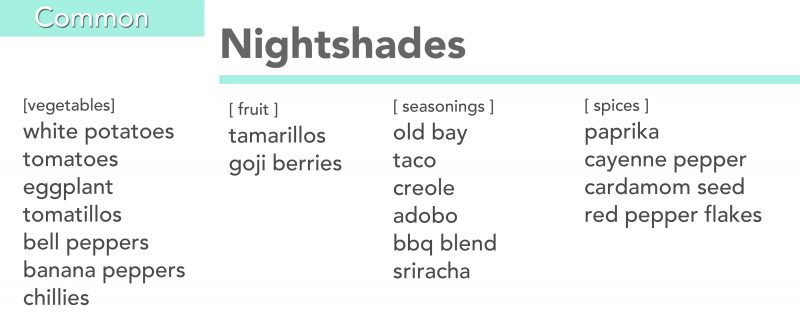
If you think nightshades may be negatively affecting your health, you can try avoiding all nightshades for three months. After this time period, slowly reintroduce them, taking note of any aches, pains, stiffness, loss of energy or headaches that may accompany the return of this food into your diet. Until then, explore our entire collection of Nightshade-Free recipes, or view a few of our favorites below:
























